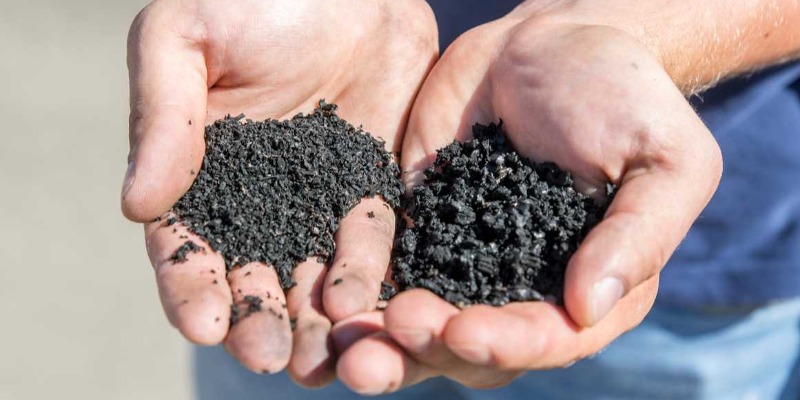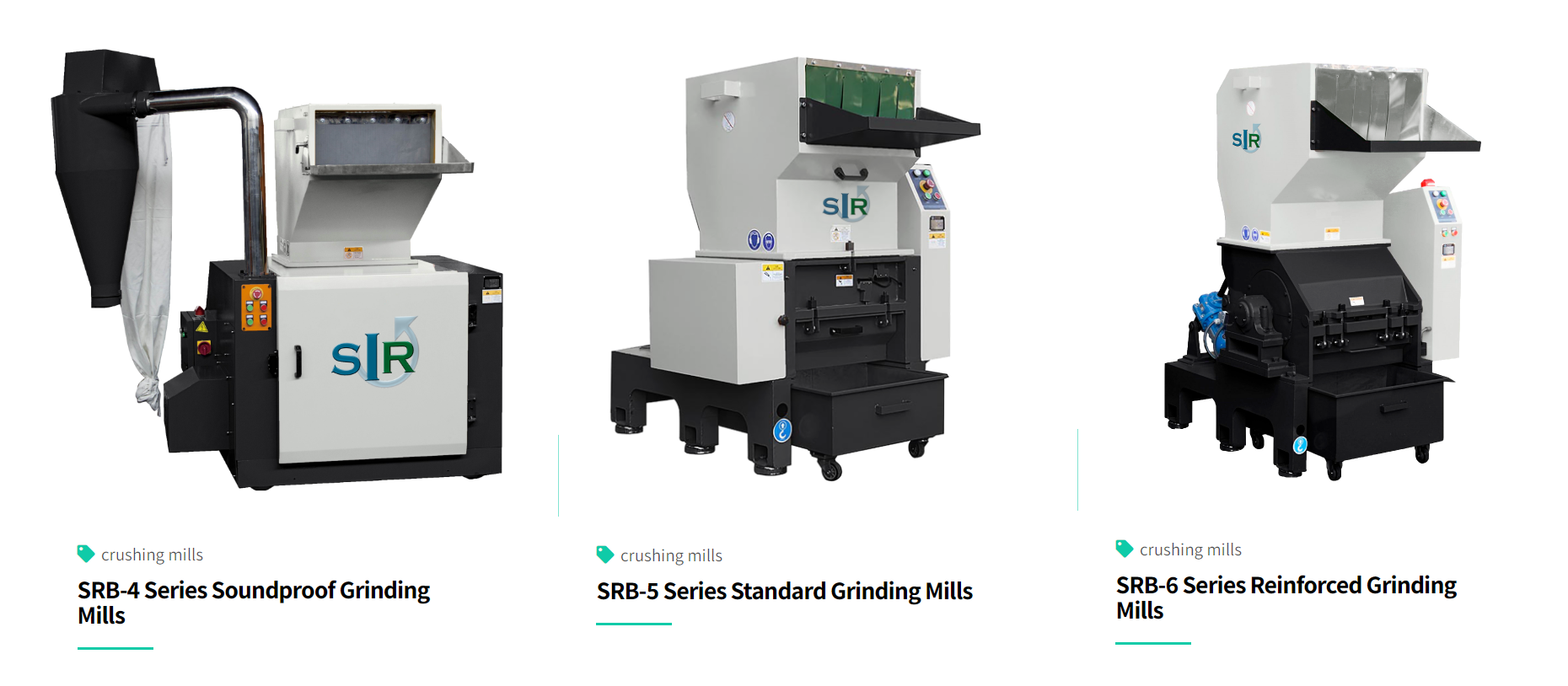Mills play a crucial role in numerous industries, from recycling to manufacturing and food production. While processes such as crushing, grinding, and granulating are well-known, modern technology offers more advanced and efficient methods. This article explores innovative techniques that enhance the quality and efficiency of processing.
Fundamentals of Mill Processing
Before delving into more advanced processing techniques, it’s crucial to understand the fundamentals that form the basis of all milling operations. These traditional methods have evolved significantly thanks to technological advances and are essential in the day-to-day of multiple industries. Here, we explore three key processes that vary in intensity and type of material reduction: crushing, grinding, and granulating.
- Crushing: This process involves reducing the material to very small particles or even powder. It achieves the greatest fineness in the decomposition of materials and is essential in industries that require a large surface area in their final products, such as pharmaceuticals and chemicals.
- Grinding: Grinding refers to reducing materials to finer particles than granulating but not as fine as crushing. This method is commonly used to produce flours and other powders that require a certain uniformity and fineness, typically in the food industry.
- Granulating: This method reduces materials to larger chunks or granules and is the least intense of the three. Granulating is ideal for applications that require larger particle sizes and less uniformity, such as in certain types of recycling or in agro-industry.

Advanced Processing Techniques
As demands for precision and efficiency in industrial production grow, so do the technologies available for material processing. Beyond traditional methods of crushing, grinding, and granulating, there are advanced techniques that offer finer control over particle size and quality. These advanced methodologies are crucial in fields where precision is key to the effectiveness and safety of the final product. Here, we explore three of these techniques: micronization, pulverization, and cryogrinding.
- Micronization: This process achieves micrometric particle size, essential for applications in the pharmaceutical and chemical industries where uniformity and particle size can significantly affect the effectiveness of the final products. Micronization is ideal for increasing the solubility of compounds and improving the bioavailability of medications.
- Pulverization: Unlike simple crushing, pulverization seeks to achieve an even finer and more uniform consistency of the processed material, which is critical for products that must dissolve quickly or are used in coating applications. This method is especially useful in the preparation of paints, coating powders, and pharmaceutical products.
- Cryogrinding: By using low temperatures to facilitate grinding, this method is ideal for materials that are thermally sensitive or have elastic properties that complicate their processing at normal temperatures. Cryogrinding is particularly valuable in the plastics industry and in handling spices and other foods that can lose their properties or degrade with heat.
Impact of Technology on Milling Methods
The integration of advanced technologies into mills has revolutionized the way industries process materials. In particular, the development and improvement of industrial blades have been fundamental to increasing the efficiency and precision of these processes. These advances are especially critical in the field of recycling, where the ability to efficiently process waste materials determines the economic and environmental viability of recycling operations.
- Automation and precision control: Advances in automation and control systems have enabled mills to operate with greater precision, automatically adjusting to the characteristics of the processed material. This is crucial for maximizing the efficiency of blade use, ensuring precise and consistent cuts that reduce wear and improve material performance.
- Developments in blade design: Innovations in blade design have not only improved durability and effectiveness but have also expanded processing capabilities. Stronger and sharper blades, designed with high-tech materials, allow more efficient cutting and less energy consumption, which is essential for difficult materials like plastics and metals in recycling.
- Adaptable milling technology: Modern mills are equipped with technology that adjusts blades and operational parameters in real time, allowing more efficient grinding of various materials. This is especially important in recycling, where a wide range of materials with different physical characteristics must be processed.
- Environmental impact: Efficient use of blades in mills significantly contributes to reducing energy consumption and minimizing waste. By improving the ability to recycle materials more completely and efficiently, companies not only reduce their environmental impact but also enhance their profitability.
- Collaborations and future developments: Collaboration among blade manufacturers, mill designers, and recycling specialists is key to the continued development of more effective technologies. These collaborations foster innovations that can tackle the challenges of modern recycling, from complex plastics to electronics, with greater efficacy and reduced environmental impact.
Applications in Recycling
Recycling is not only an environmental necessity but also an economic opportunity for industries that can efficiently transform waste materials into valuable resources. Cutting and grinding technology plays a crucial role in this process, and high-quality industrial blades are fundamental to maximizing the effectiveness of these operations. Below, we explore how advanced blades and mills are making a significant difference in various areas of recycling.
- Plastic Recycling: In plastic recycling, precise and durable blades are essential for effectively breaking down plastic materials into particles that can be further processed. From PET to high-density polymers, the quality of the cut directly affects the quality of the recycled material and its viability for reuse in new products.
- Metal Recycling: Blades designed to handle the rigidity and variety of metals can significantly improve the process of separation and size reduction. This allows for more effective separation of ferrous and non-ferrous metals, facilitating their melting and refining for the production of new metal materials.
- Electronic Waste Treatment: With growing concerns about electronic waste, advanced recycling techniques are essential. Blades that can efficiently shred and grind electronic components allow the recovery of precious metals and other valuable materials, reducing the amount of waste that ends up in landfills.
- Development of Recycled Rubber Products: Recycling tires and other rubber products is challenging due to their durability and design. Specialized blades that can effectively cut and granulate rubber are critical for producing recycled materials that can be used in the creation of recreational and sports surfaces, modified asphalt, and other rubber products.
- Innovations in the Processing of Fiberglass and Construction Waste: Recycling construction materials and fiberglass requires blades that can handle abrasive materials. Innovations in blades and grinding processes allow these materials to be recycled more efficiently, transforming them into useful aggregates for new construction or industrial products.
Future Trends in Mill Technology
The future of mill technology focuses on the integration of sustainable and efficient solutions that can respond to the growing environmental and economic demands. Advances in composite materials and automation technologies promise to revolutionize this field. Blades and mill components are being designed to offer greater durability and energy efficiency, which not only reduces operating costs but also minimizes the environmental impact of milling operations.
This evolution in blade design and manufacturing is directly linked to a greater capacity to process a wider variety of materials with less waste and greater precision. The trend toward customization and adaptability in milling systems is transforming industrial operations. Modern mills can be adjusted for different materials and particle size requirements, improving production flexibility.
Additionally, the integration of artificial intelligence and machine learning into mill systems facilitates the continuous optimization of processes, improving the quality of the final product and the efficiency of production through real-time adjustments based on data analysis.
For over 25 years, Cuchillas Castillo has led the Spanish market in the development of high-quality industrial blades, playing an essential role in the recycling and handling of industrial and post-consumer materials. We continue to innovate and offer advanced solutions that meet the current demands of the industry, always with a firm commitment to quality, sustainability, and efficiency. These principles allow us not only to anticipate future challenges but also to maintain our leadership position in the sector, adapting and evolving to meet the changing needs of our clients and the market.


